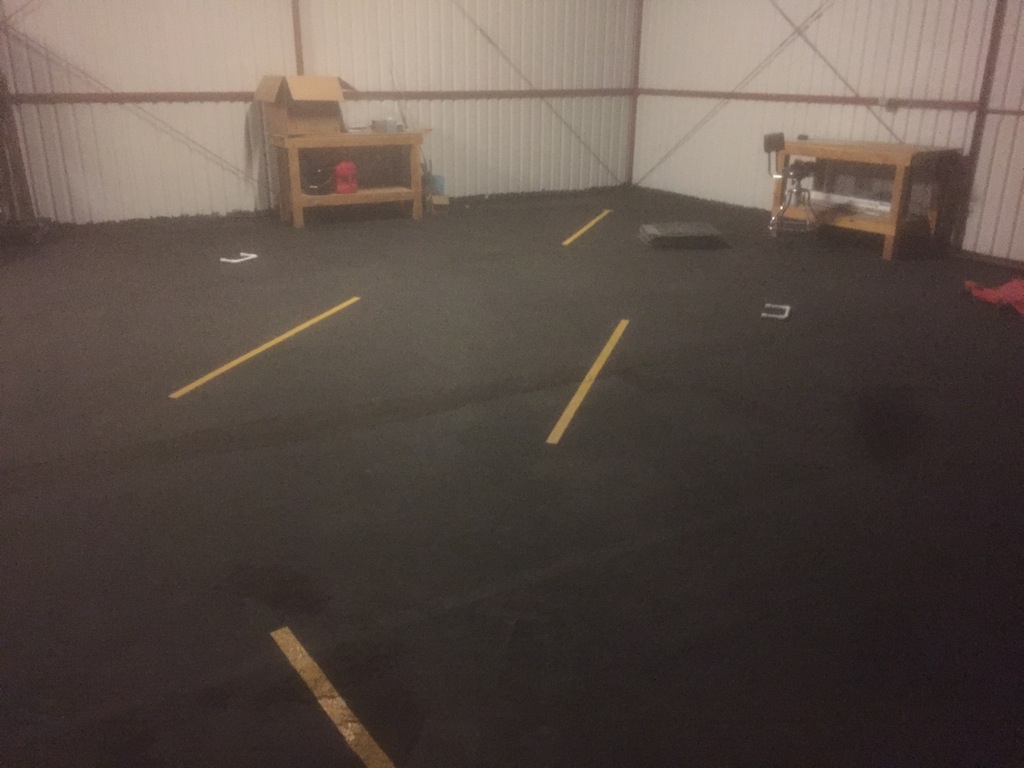We’ve been keeping our eyes open for a box hangar that would let us put our Bonanza and the RV in the same hangar. One came open at the Reid-Hillview Airport (KRHV) where we keep our Bonanza, so we grabbed it. I flew the RV up yesterday and had to shoot an LPV approach to just above minimums. That was the first low approach I’ve flown in the RV, and the autopilot flew it beautifully. ATC asked me to maintain best forward speed on the approach, so I flew the approach at 170KIAS until about 4 miles out. I still popped out on about a 1.5 mile final at 140KIAS. I kicked off the autopilot, chopped the power to idle and still had to do a full-rudder slip the whole way down final to get down to 70KIAS over the threshold.
I picked up a truck this morning, and with the help of a few buddies, we got all of the rest of the stuff from the old hangar moved over and set up.
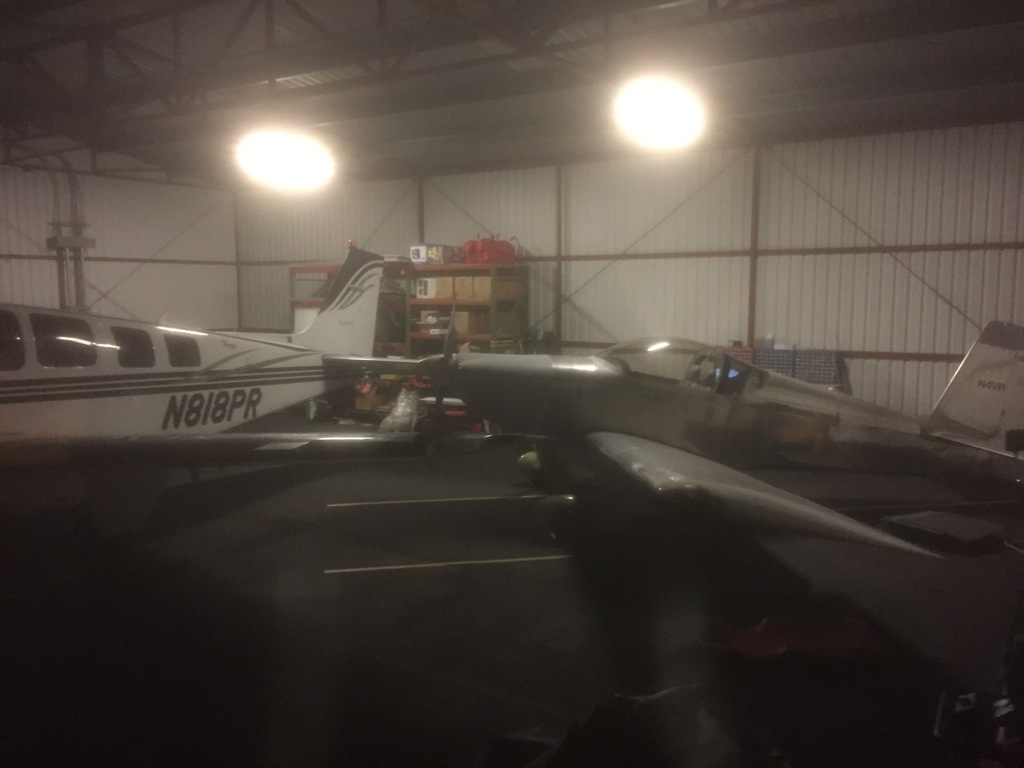
The new hangar is 35’x50′, so there’s plenty of room for both planes. Even with both in place, there’s at least 3′ between the planes and enough room to comfortably walk around both of them.
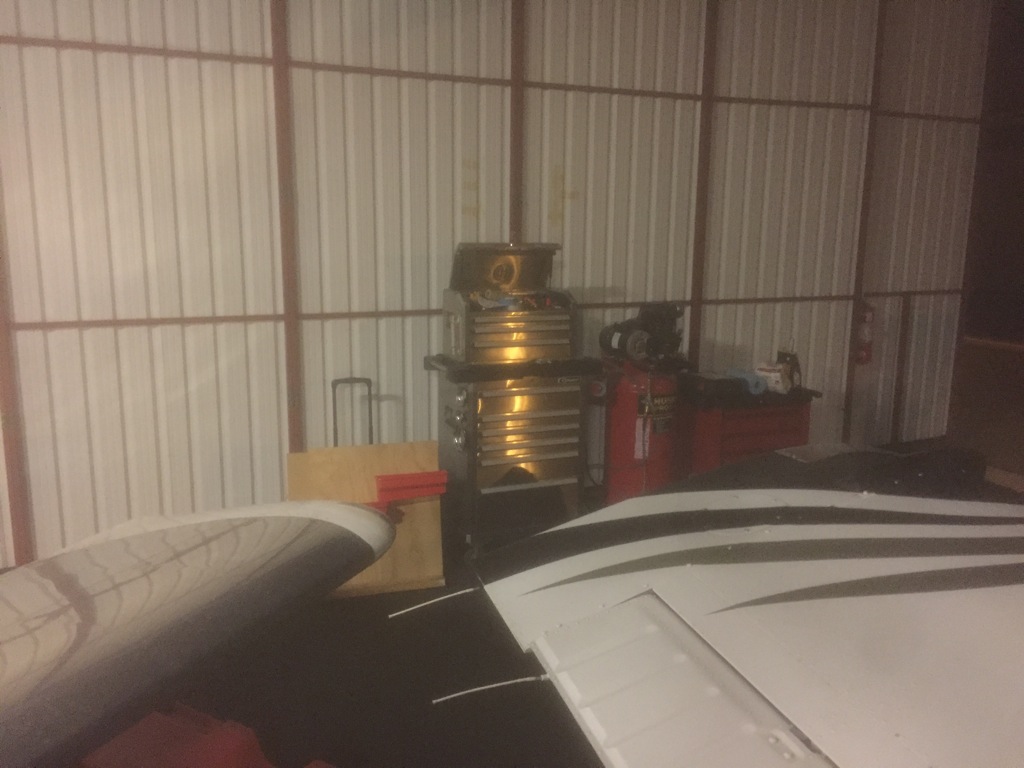
We got my giant shelves set up and filled them with all of the stuff from both hangars. I still need to unpack and organize everything.
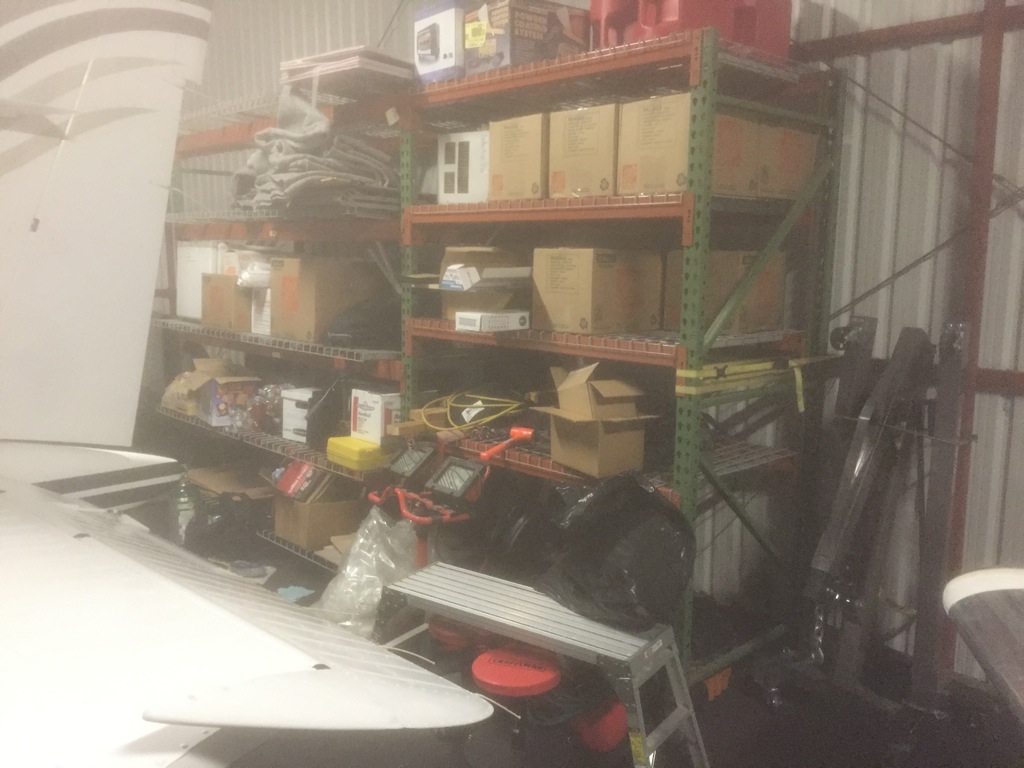
We also set up the back corner with a couch and recliner and our old TV and stereo.
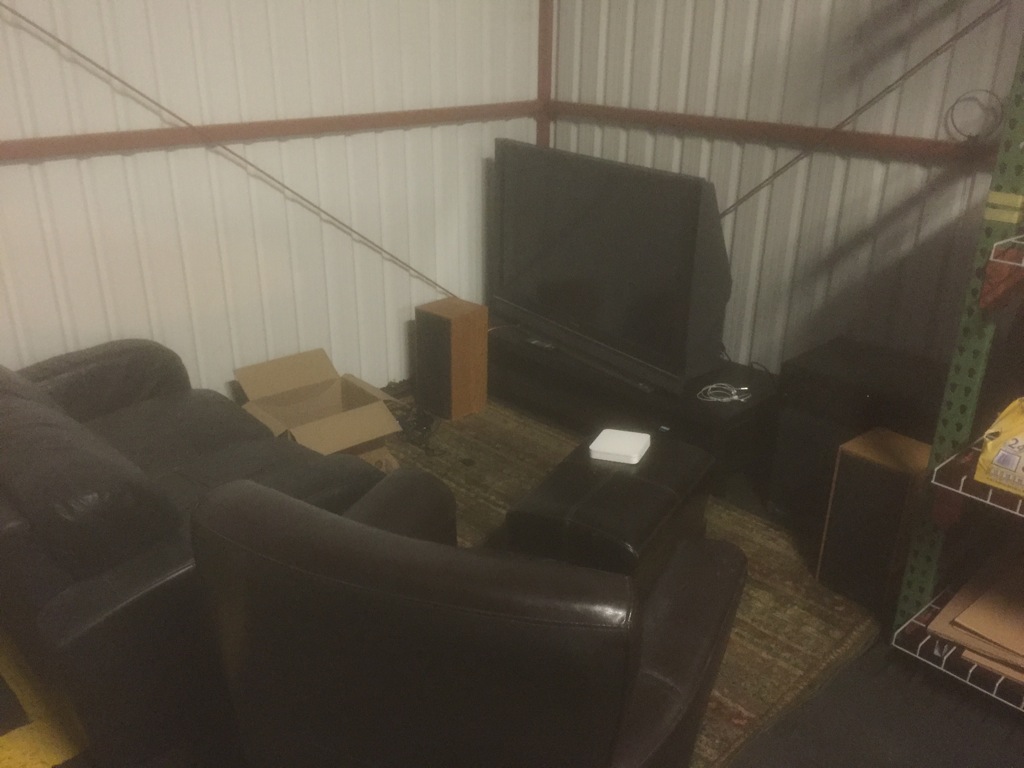
My buddy Dan and I laid out and painted some lines so that we can ensure the planes go back into the same spots each time.
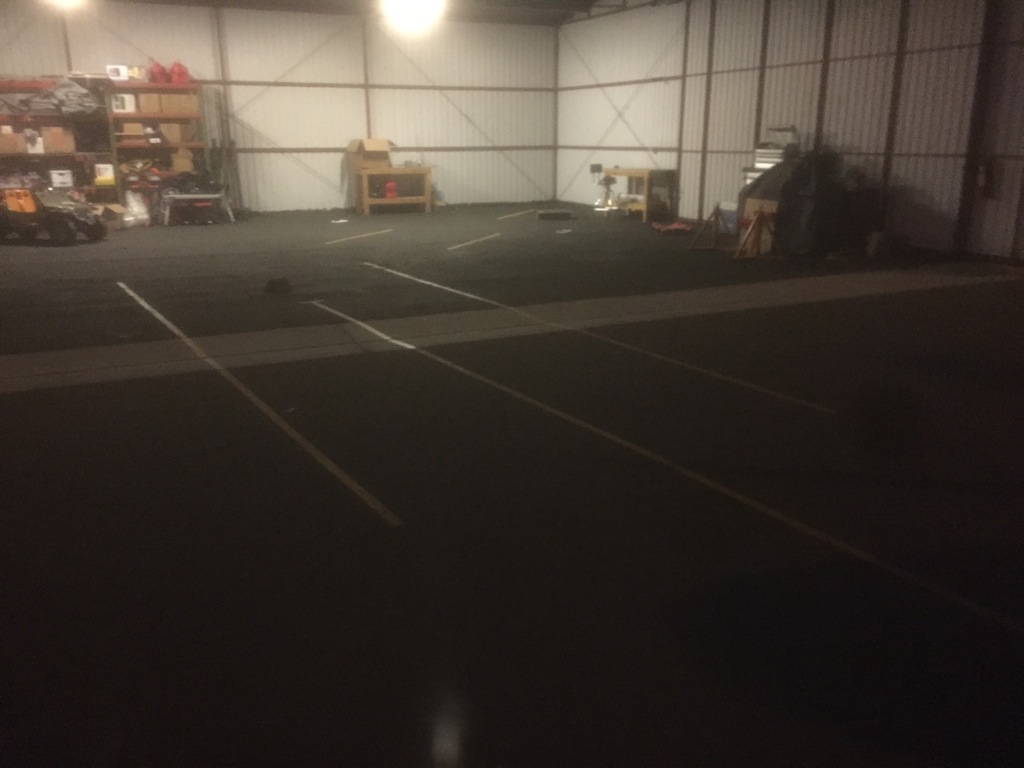
I set up my workbenches behind the wings of the RV which should work out well.
